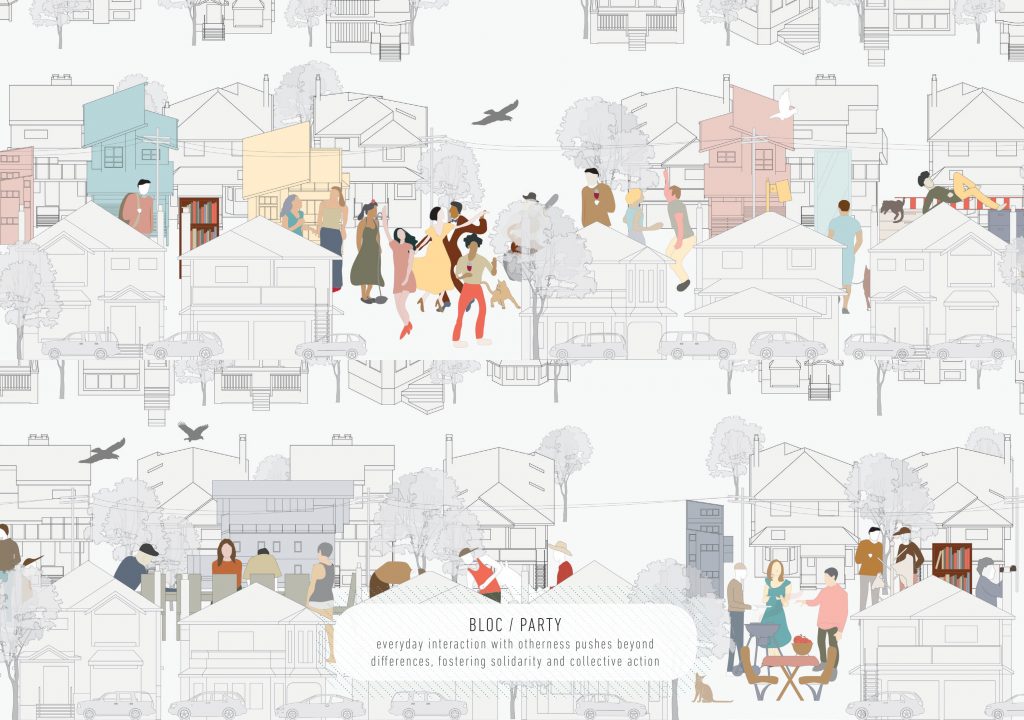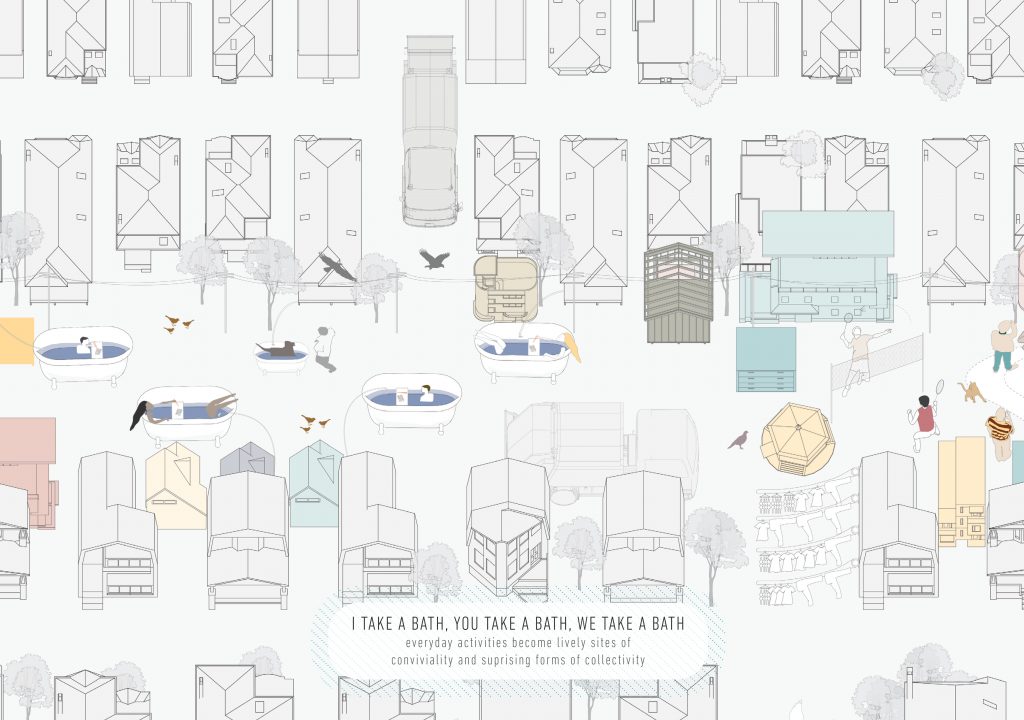Home in Common
Shortlisted entry, HOME-LY, ASA International Ideas Competition, 2017
Collaborators: Roy Cloutier, Pengfei Du, Jennifer Leung, Nicole Sylvia, Daichi Yamashita, Lőrinc Vass

As the homeownership models that sustained previous generations slip further out of reach, more and more people are left in a precarious relationship with domestic space—locked out by the shifting tides of the housing market. Vancouver, Canada is a case in point: repeatedly touted as among the world’s most ‘liveable’ cities, it is paradoxically also one of the most unaffordable for owning a home. Its housing remedies rely on conservative, nostalgic models of ownership—in turn largely failing to impact the interrelated problems of scarcity, homogeneity and unaffordability. Rather, the very nature and meaning of ‘home’ itself needs a more fundamental remodeling: from homes in isolation to Home in Common.
Amidst Vancouver’s stifling monoculture of condominiums and single-family homes, a diverse ecology of living sprouts forth from the interstices of the formal city. Its laneways, overlooked zones of infrastructure, transform into a shared network of domestic activities, where mundane rituals acquire new collective roles. Instead of nostalgically recreating older modes of living, this sharing network embodies an optimistic vision of a future—one where fluidity and impermanence are not bemoaned but rather harnessed, fuelling openness, vitality, and new forms of collectivity.
In place of the static ownership of a singular domestic space, Home’s constituent components are unbundled and distributed within the city, allowing them to be held communally. Alongside the singular rooms of apartments and houses, an evolving network of shared spaces hosts a multiplicity of activities impossible in isolation. No longer a hermetic site of solitary life, domestic space proliferates throughout the city as a field of experimentation, where collective sociability is continually formed through mundane rituals. By rethinking Home not only as a space but also a process, a new city emerges. Urban space is claimed as an act of exchange and sharing: the city becomes a Home in Common.
Operating not only as a speculative design project but also an investigation into potential formats for architectural research and activism, the project points toward one alternative role for architectural knowledge in the production of the city. Rather than merely reacting to the status quo—dominated by restrictive building regulations and ‘developer-turned-visionaries’—architects must rise to the challenge of synthesizing aesthetic capability and ethical responsibility to imagine and draw alternative possibilities. Doing so holds the potential to open for architecture an expanded realm of ethical engagement—and in turn, a path toward a more con-vivial city.



